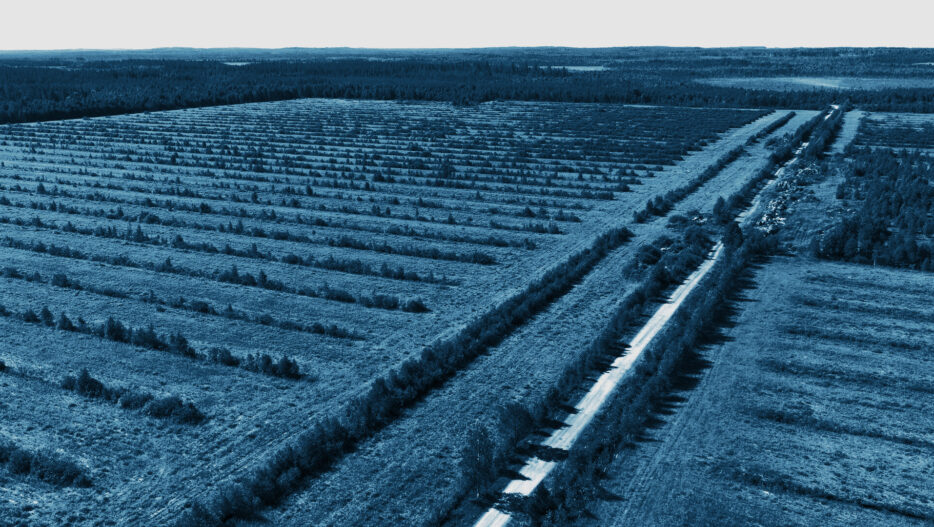
Neova models soil emissions and biodiversity values of its land areas to optimize post-use forms
Neova owns approximately 60,000 hectares of land in Finland and leases an additional 10,000 hectares of various land areas. In 2024, less than 20,000 hectares of these lands were actively used for peat production.
Ten years ago, areas removed from peat production were either afforested or transferred to local landowners for agricultural use. The situation is now quite different. In the past three years, no areas have been converted to agricultural use. New land use forms for areas removed from production include growing renewable raw materials for substrates, project development and permitting for solar and wind power production, and restoration to wetlands and biodiversity areas.
In the past five years, approximately 8,000 hectares of old production areas have been afforested using ash fertilization, over 70 wetlands have been constructed covering a total of about 1,600 hectares, and solar and wind power projects have been permitted or are in the process of being permitted on approximately 2,500 hectares. At the same time, new active production areas covering about 1,000 hectares are being permitted and prepared, mainly to meet the demand for growth and bedding peat and new high-value products.
Modeling helps in selecting the right post-use form
The lands owned by Neova are mainly peat-based. Soil emissions from these lands vary significantly depending on the thickness of the peat layer, the topography of the area, and the hydrological situation. To effectively manage soil emissions when deciding on post-use forms, Neova is launching a modeling project to map all its owned and leased land areas in Finland from the perspectives of soil emissions and biodiversity.
Finland is falling behind its carbon neutrality target, and for this reason alone, it is important that the current emissions of areas removed from production are known as accurately as possible when selecting the next land use forms. “Restoration always costs. To get started as quickly as possible, external funding would be needed, as restored areas are always removed from economic use,” says Pasi Koivisto, Director of Real Estate Development at Neova.
According to Koivisto, Neova aims to create a reliable roadmap to implement wetlands, solar, wind, and hybrid parks, and afforested areas in a way that optimizes the reduction of soil emissions and provides reliable information on emissions for decision-making and reporting to third parties implementing various projects on Neova’s lands.
At the same time, the company will also gain information on which of its lands might be suitable for potential commercial carbon sequestration. A project team has been established to model the lands and explore the possibilities of commercial carbon sequestration, led by Project Manager Jarkko Kaattari. Jarkko will continue to also be responsible for Neova Terra’s pellet business.
According to Kaattari, the modeling will utilize existing maps and research data from both internal and third-party sources, linking the data much more precisely to different land parcels. “On an area of just 100 hectares, the post-use form of a former production area can vary. To minimize soil emissions, the result may be that part of the area is restored to a wetland, part is afforested, and part is used for renewable energy projects.”
Koivisto states that the goal is to optimize emission management, develop the selection of biodiversity sites, and acquire baseline data for commercial carbon sequestration if the carbon sequestration market materializes in Finland in the coming years. According to Koivisto, commercial biological carbon sequestration is a possibility, but it requires strengthened EU legislation and a reliable marketplace where new sinks can be transparently and credibly traded. “The most important thing at this stage is to determine the special characteristics of our land assets so that we are ready to make decisions if the window for commercially viable carbon sequestration opens in the coming years,” says Koivisto.
Koivisto also mentions that Neova is no longer actively selling its land as raw land. “The focus is on increasing the value and yield of land assets through active forest management, developing solar, wind, and hybrid parks on our own or leasing areas for these purposes to third parties. Additionally, sufficient areas are reserved for the company’s own raw material procurement for current and future businesses,” says Koivisto.
For more information:
- Jarkko Kaattari, Project Manager, Neova Oy, tel. +358 40 158 3064
- Pasi Koivisto, Business Area Director, Neova Oy, tel. +358 40 848 6541